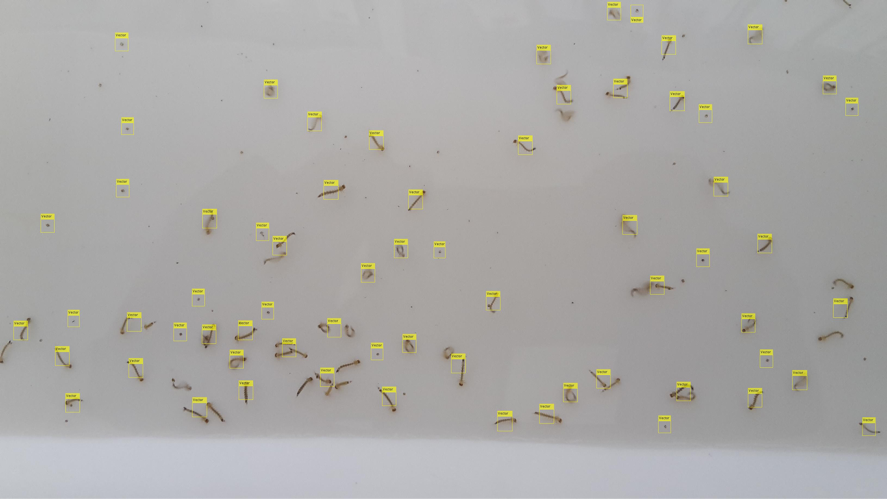Recognition and Automatic Counting of Infectious Diseases Transmitting Vectors

- Creado por: ModeMat
- Estado: Ejecucion
- Colaboración: EPN
MODEMAT project, funded by the Escuela Politécnica Nacional de Quito ($79.588). Start: March 2016.
It is known that the agents responsible for the transmission of diseases like Dengue, Malaria, Chikungunya, among others, are mainly the following species of mosquitoes: Aedes–Aegypti, Anofeles and Culex. Epidemiologist called these mosquitoes transmitting vectors.
In this project we propose a methodology for recognition and automatic counting of different stages of maturation of these transmitting vectors by using digital photographs. We propose the development of mathematical models based on learning machine and computational vision theories. Further, we propose to build numerical algorithms to be implemented in a high performance computational equipment. These computational tools will be used to process several samples photographed by researchers from the National Institute of Public Health Research (INSPI).
References
- [B] C. M. Bishop. Pattern recognition and machine learning. Springer, 2006.
- [BCB] E. S. Brown, T. F. Chan and X. Bresson. Completely Convex Formulation of the Chan-Vese Image Segmentation Model. International Journal of Computer Vision, 98 (2012) 103–121.
- [DT] N. Dalal and B. Triggs. Histograms of oriented gradients for human detection. CVPR ’05 Proceedings of the 2005 IEEE Computer Society Conference on Computer Vision and Pattern Recognition (CVPR’05), 1 (2005) 886-893
- [FHT] J. Friedman, T. Hastie and R. Tibshirani. The Elements of Statistical Learning. Springer, 2009.
